How to Remove Polyurethane from Door Knobs
Learn how to remove polyurethane from door knobs, door handles and cabinet pulls to prepare them for painting (or aging with brass ager).
Accidents make the world move forward.
From penicillin to Viagra, some of the most profound and uplifting (pun intended) discoveries have happened either entirely by chance or as an unexpected side effect while pursuing a decidedly different path of research. Sir Alexander Fleming discovered that a hunk of moldy bread left out while he was on holiday inhibited the growth of some influenza samples he’d been monkeying around with, and thus, penicillin was born. And Pfizer was working on a prototype angina drug when they noticed some curious side effects during clinical trials. You’d be hard-pressed to find a more important pharmaceutical breakthrough in recent times. Viagra single-handedly engorged Pfizer’s profit margins and thrust them to the top of their field.
And so it was at The Navage Patch this past summer, just without all the mold and thrusting.
Handan was suffering through the itchy consequence of a rogue mosquito encounter, and I recommended rubbing alcohol as a temporary salve. Remembering the 4 large bottles of 99% isopropyl I’d somehow managed to find during the height of the pandemic, I rooted one out from the medicine cabinet and went to tend to my babes’ suffering. She sat at the kitchen island on one of the stools. I stood a few strides away on the other side of the island. I opened the bottle, folded a paper towel, and while I walked towards her, I upended the bottle onto the folded paper towel. Immediately, the alcohol soaked through the towel and 3 errant drops made their way onto our new wood kitchen floor.
I looked down and knew it wouldn’t end well.
“Oops,” I said and handed the alcohol-soaked paper towel to Handan.
I reached for a dry towel, bent down and wiped up the isopropyl.
I was too late. The damage was done.
The spots where the alcohol had fallen were hazy and rough.
“Awwwww, crap, my babes!” I said, “I just ruined the floor!”
Upon further inspection and attempted fixes it was confirmed – I had indeed ruined the floor in that one small spot. It’ll be a relatively easy fix one day when I have the time and motivation to deal with it, but after my initial dismay, a thought struck me.
If alcohol ruined the polyurethane on the floor in five seconds, I wonder how it would work on our brass door knobs or on poly-coated wood?
We still had a whole bunch of brass door knobs (handles) that I needed to paint, and I could imagine wanting to remove a poly coating from an intricate piece of wood, like a corbel or something. Sanding polyurethane from flat wood is easy, but ornate surfaces are nearly impossible.
I told Handan of my idea, and we both ran to the basement to experiment, all thoughts of ruined floors and bug bites forgotten.
How to Remove Polyurethane from Door Knobs
Our test subjects were brass door handles, brass cabinet pulls and an old stained and poly’d cabinet door.
I used 99% and 73% isopropyl alcohol and denatured alcohol in the experiments. Without boring you too much with all the permutations, let me just sum it up briefly.
None of them worked to remove polyurethane from the cabinet door.
And none seemed to remove anything from either of the knobs either.
Maybe they needed more time. At this point, we gave up on the cabinet. I saw better promise in door knobs, so I focused my energies there.
After letting them soak for several minutes, I discovered that the denatured alcohol seemed to soften the polyurethane. This was especially noticeable on the brass door handles, as they have a thicker coating. But even on the cabinet pulls, it became easy to run a fingernail across the knob and watch the poly peel. The isopropyl on the other hand didn’t seem to have any adverse effect. How on earth could it destroy my floor finish in five seconds flat, but hours of soaking knobs in it didn’t even haze their surface?
Meh, that’s a question for someone with a bigger brain and more time than I had, so I set aside the isopropyl and focused on the denatured alcohol.
Method 1 – Denatured Alcohol
I set a few brass handles and cabinets pulls in a glass jar and filled it with denature alcohol, then I capped the jar to prevent evaporation. The next day I had a look. When I pulled out a door handle, the haze was there! The circular plate was entirely hazy and the poly on the handle had wrinkled!

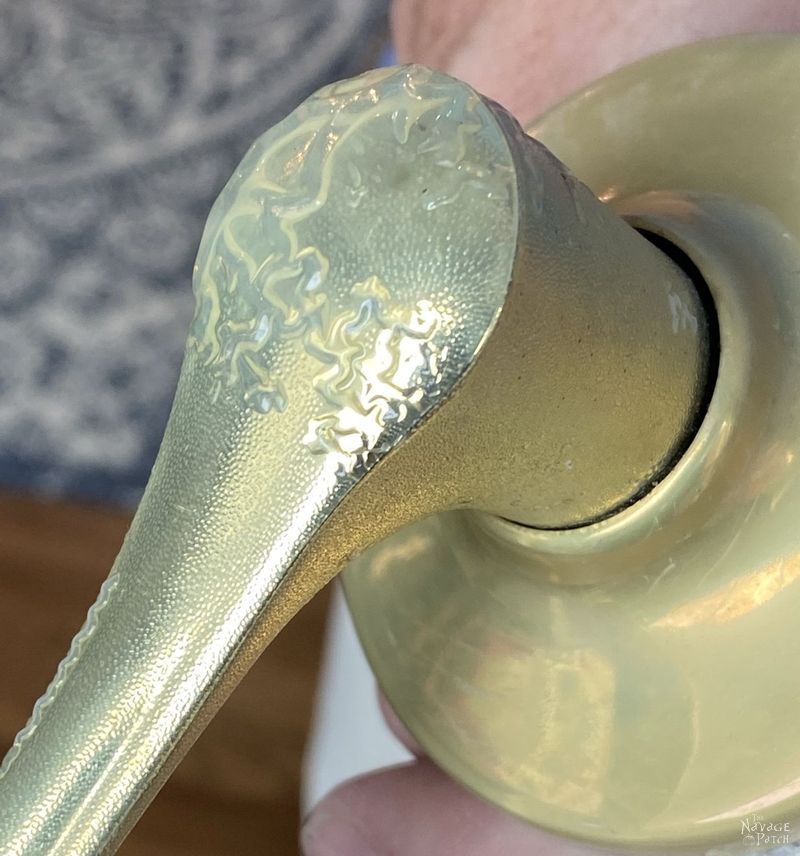
Oh, this was amazing! But I still had this notion that more time in denatured alcohol might actually dissolve the poly.
Spoiler alert: it doesn’t.
I tried leaving them another day, but the results were the same.
A one or two day soak in denature alcohol allowed me easily to peel and remove the polyurethane from the door handles.
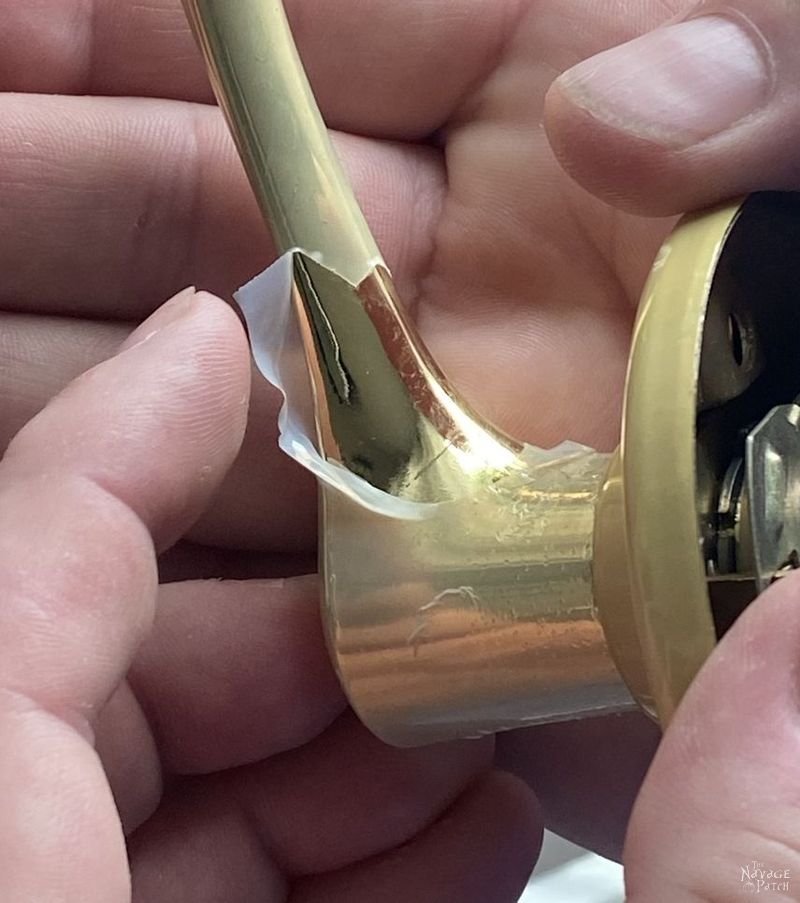
The brass cabinet pulls were a slightly different story. Their poly coating is thinner, and paradoxically, that makes removing it just a little bit harder. Since the coating is too thin to peel off in a sheet, it needs to be scraped or rubbed off. This can be done with a fingernail, but I found that using 0000 steel wool worked quicker. In my next post, I’ll be showing you how to age brass with brass ager. The one thing I have to say about using 0000 steel wool is that it will give the brass a satin sheen as opposed to its original glossy, so if you plan to age the brass and glossy is your thing, then you may want to opt for a more drastic polyurethane removal method that I’ll share after the video.
Here’s a little video we made. It starts with me removing polyurethane from brass door handles, and then I show some of the brass cabinet pulls I aged with brass ager. I will go more into that in the next post, so stay tuned! The last part of the video shows how I removed the poly from those cabinet pulls.
This denatured alcohol technique is a good solution for those who don’t like the harsh chemicals in (and mess associated with) most strippers on the market. But if you’re not averse to chemicals, let’s have a look at some other methods for removing polyurethane from door knobs.
Method 2 – CitriStrip
All paint and varnish strippers are toxic and dangerous to a degree, but some are far, far worse than others. On the safer side of the spectrum is CitriStrip. Don’t fall into the trap of thinking that it’s all natural or made from oranges or any such malarkey. The stuff is poison…it’s just less poison than some other strippers out there. I use CitriStrip indoors without issue, and the only PPE I wear are gloves. You should also wear goggles or at least safety glasses, but I’m a certified idiot, so I get an exemption. There were some strippers I’ve used that were so horribly lethal that I wore 2 pairs of gloves, an organic solvent respirator, goggles and I only worked with it outside. Fortunately, those nasty brute strippers have been mostly supplanted by safer non-methylene chloride alternatives like CitriStrip.
Anyway, brushing CitriStrip all over the door handles and leaving them overnight or 24 hours will also get rid of the polyurethane. And it’ll make a big mess, so plan accordingly. For a couple of handles, I applied the CitriStrip and then forgot about them for at least a week. It actually could have been two. When I finally remembered, this is how they looked.
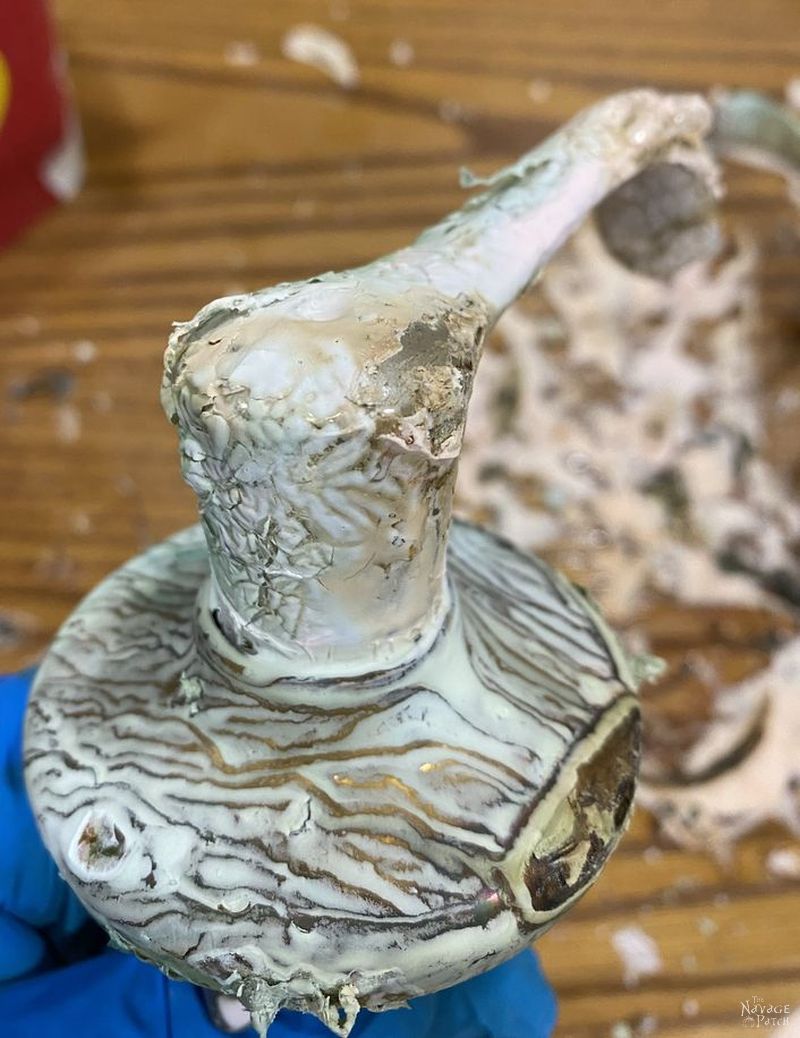
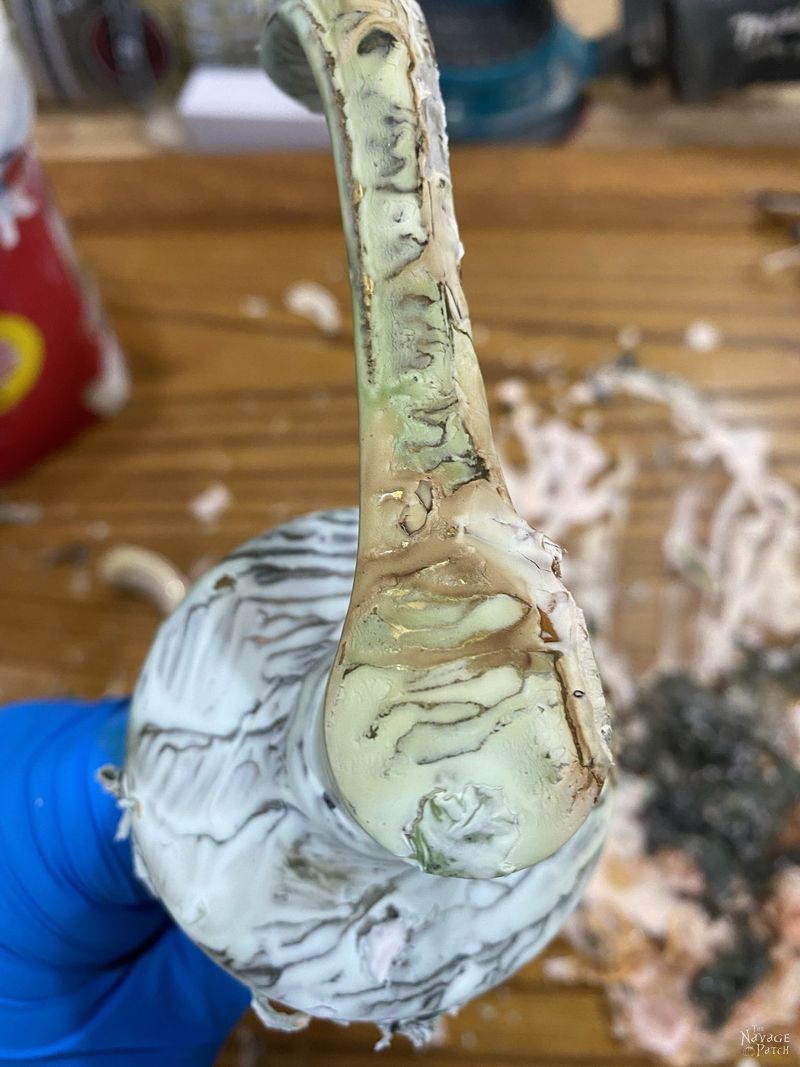
And when I wiped off the dried sludge, I saw this!
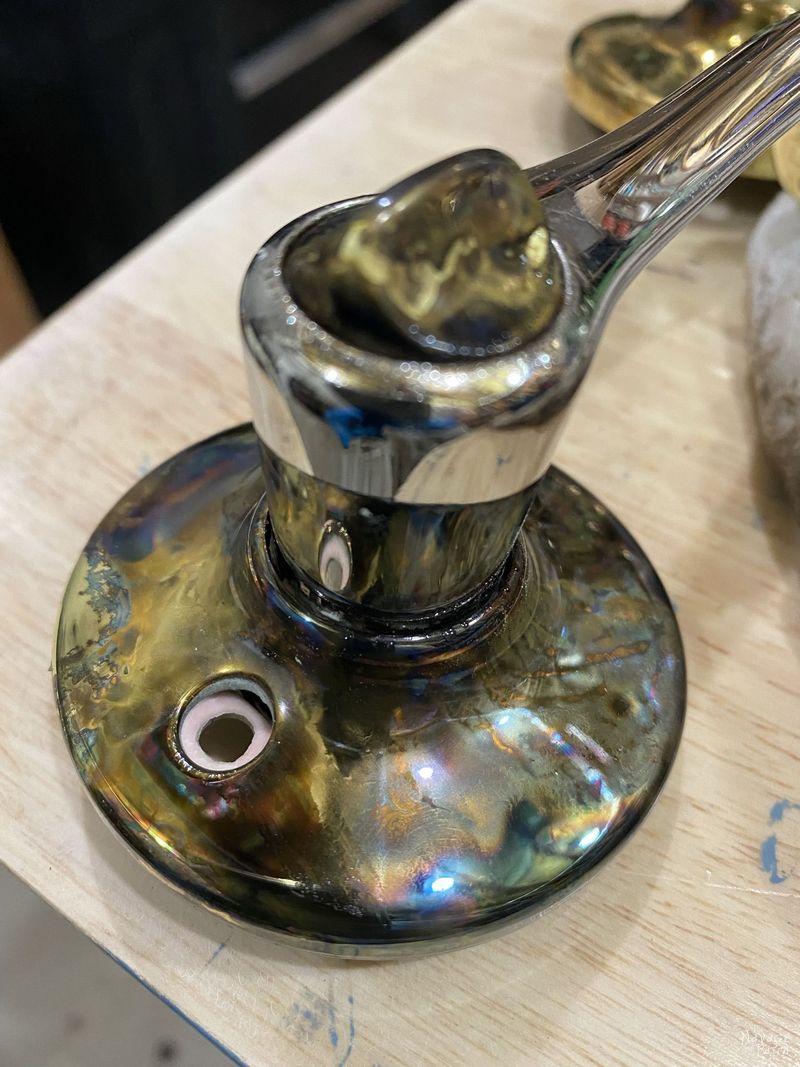
Stripped of polyurethane and aged all at once!
Method 3 (Best for Cabinet Pulls) – Non-Gel Stripper
By far the easiest (though most toxic) method for removing polyurethane from cabinet pulls is non-gel stripper. This is also the preferred method if you want to age brass pulls afterward and have them look glossy. I put the stripper into a glass jar, carefully add a few knobs and wait about 10 minutes, then I rinse the knobs in a mineral sprits bath. Here’s a video how it works. I will show the rest of the video in the next post! 😉
I’ve linked to these strippers and mineral spirits on Amazon, but they are much cheaper at Home Depot or Lowes, if you have one nearby.
With the naked brass exposed, you can spray the handles/knobs with self-etching primer and then spray paint them or you can age them with brass ager. Check out our post about painting door knobs for more details on painting. In my next post, I’ll show you what brass ager can do, but until then, have a little peek at these knobs!
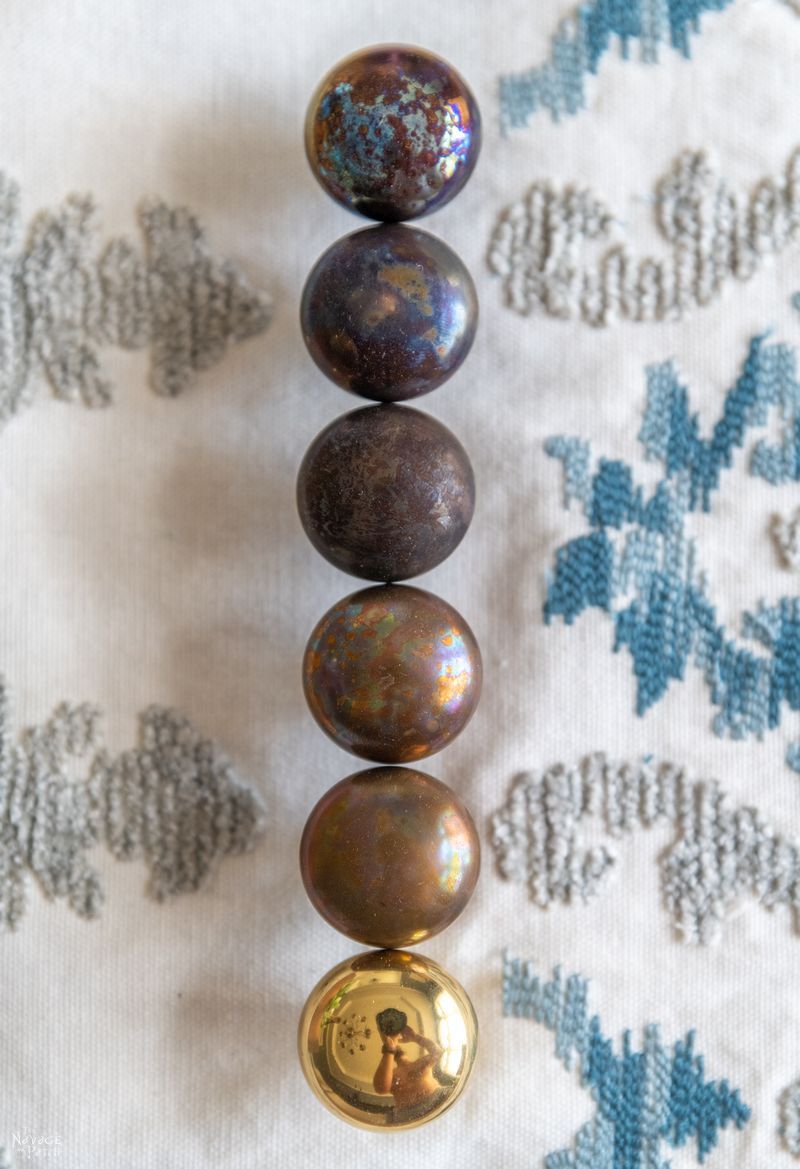


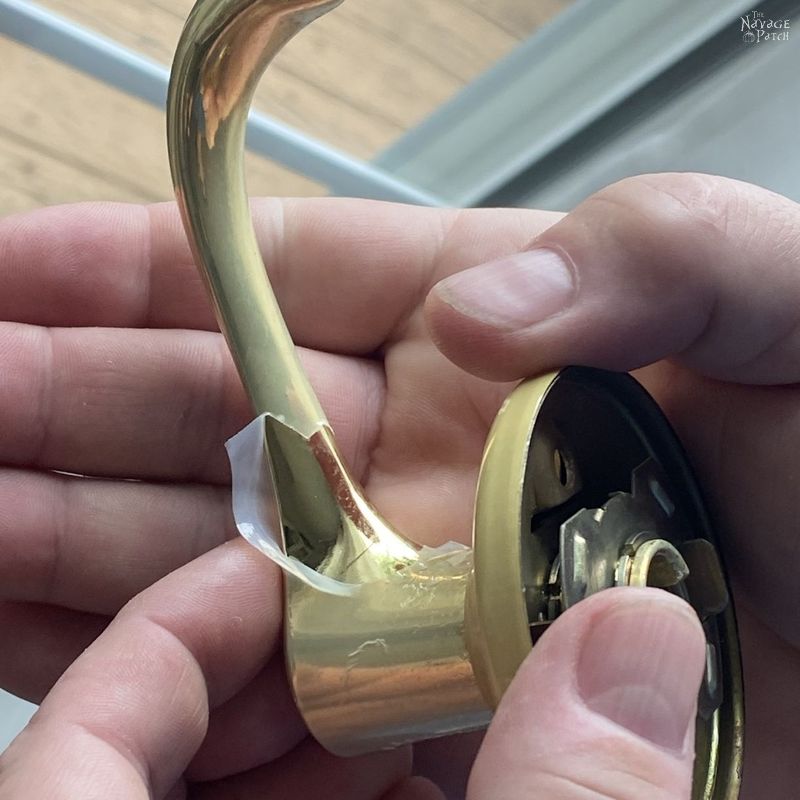


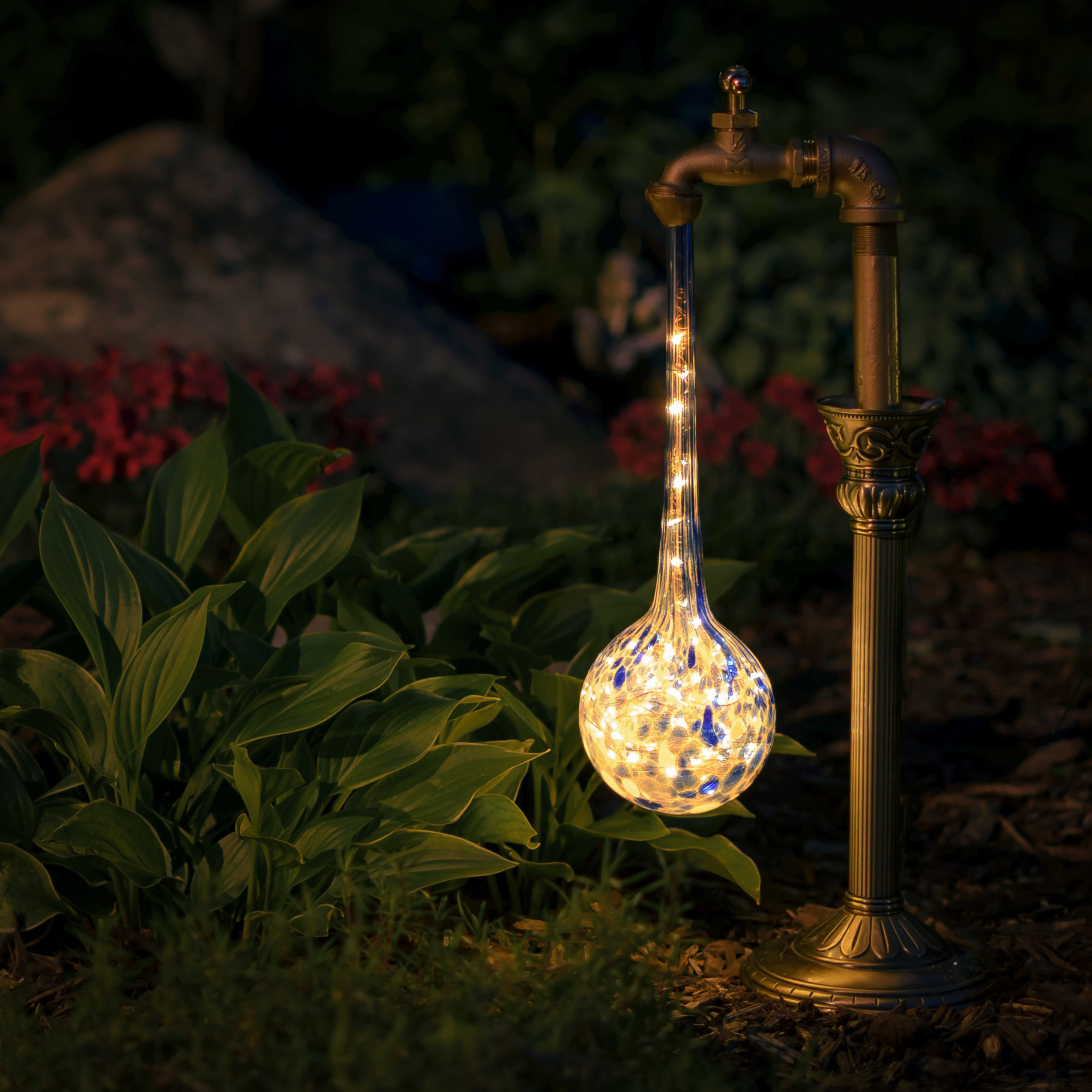
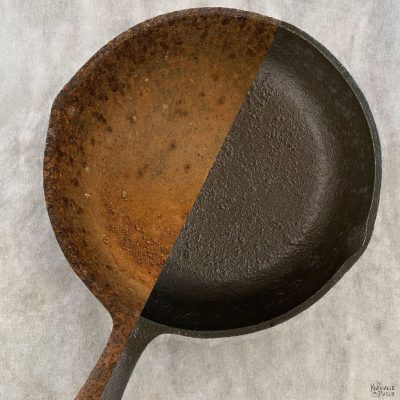




Some shoe polish will rehydrate your floor. My daughter spilled a bottle of nail polish remover once. I threatened her with her life about doing her nails on my beautiful kitchen table to which she replied, “I’m not going to spill anything.” Yeah, ummm.. It was a weekend and we live in a very small town, therefore, no hardware stores. My thought was to rehydrate the wood. KIwi shoe polish in the 1.125 oz tub did the trick. I reminded my husband of it just the other day and he admitted that it had the corrected the issue so well, he’d forgotten about it.
Shoe polish is a great idea – Thanks, Candy!
I know this is old, and I know that I also didn’t look at the posts. But did you happen to get any denatured alcohol on your clothes, and did it damage them? I ask because I have a much loved shirt that I happened to get a drop of poly on and I don’t know how to get it out, this might work enough to scrape it.
Hi Lara, I didn’t, however, since denatured alcohol is pretty similar to the alcohol we drink, it shouldn’t be a problem. If the denatured alcohol doesn’t work, I’ve had luck using professional strength Goof Off to remove dried paint from clothing. It might also remove your poly stain.
The link doesn’t work for the non gel stripper so what product is actually used? I have chrome pulls so I’m wondering if I’ll also need to strip?
Hi Tiffany, I’ve updated the link. Thanks for the heads-up!